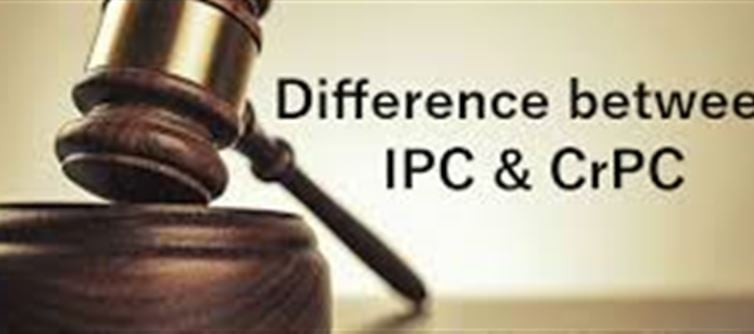
India’s criminal justice system hinges on two cornerstone laws: the Indian Penal Code (IPC) and the Criminal Procedure Code (CrPC). While both are critical for maintaining law and order, they serve distinct roles—one defines crimes and their punishments, while the other outlines how the legal process works. If you’ve ever wondered how these two fit together, here’s a clear, concise breakdown of their differences in eight catchy points to make it easy to grasp.
1. Core Purpose: Crime vs. Process
The IPC is the rulebook that defines what counts as a crime in india and spells out the punishments for those crimes. Think theft, murder, or fraud—it lists them all. The CrPC, on the other hand, is the playbook for how to handle those crimes, guiding police, courts, and lawyers through the process of investigation, arrest, trial, and beyond.
2. What They Cover: Offenses vs. Procedures
The IPC is all about the what—it lists specific offenses like cheating (Section 420) or assault (Section 351) and their penalties. The CrPC focuses on the how—it details the steps for filing an FIR, conducting a trial, granting bail, or appealing a verdict. If IPC says “stealing is a crime,” CrPC says “here’s how to arrest and try the thief.”
3. Year of Enactment: Old Laws, Timeless Roles
The IPC was enacted in 1860 during british rule, written by Lord Macaulay to standardize criminal laws across India. The CrPC came later in 1973 (replacing an earlier 1898 version), designed to modernize and streamline the procedures for handling crimes in independent India.
4. Scope of Application: Substantive vs. Procedural
The IPC is a substantive law, meaning it defines the essence of crimes and their consequences—think jail time or fines. The CrPC is a procedural law, laying out the step-by-step mechanics of enforcing the IPC, like how police investigate or how courts conduct trials.
5. Key Players Involved: Offenders vs. Authorities
The IPC targets offenders, spelling out what actions (like robbery or defamation) make you liable and what punishment you’ll face. The CrPC guides authorities—police, magistrates, and judges—on their roles, from registering a case to delivering a sentence.
6. Sections and Structure: Crimes Cataloged vs. Process Mapped
The IPC has 511 sections organized to cover crimes like those against property (e.g., theft, burglary), the human body (e.g., murder, assault), or public order (e.g., rioting). The CrPC has 484 sections detailing processes like arrests (Section 41), bail (Section 436), or trial procedures (Section 238 onwards).
7. Punishment vs. Process Control
The IPC decides the punishment—for example, up to 7 years in prison for robbery (Section 392). The CrPC controls the process of delivering justice, like whether the accused gets bail, how evidence is presented, or how appeals are filed. It’s the IPC that says “guilty,” but the CrPC that says “here’s how we prove it.”
8. Recent Changes: Legacy Laws, Modern Updates
Both laws have evolved. The IPC saw amendments like the 2013 changes strengthening laws on sexual offenses post the Nirbhaya case. The CrPC was updated in 2023 under the Bharatiya Nagarik Suraksha Sanhita (BNSS), introducing reforms like video conferencing for trials and stricter timelines for investigations to make justice faster.
Bonus Insight: They Work Hand-in-Hand
Think of the IPC as the “what’s illegal” guide and the CrPC as the “how to enforce it” manual. Without the IPC, there’d be no clear crimes to prosecute; without the CrPC, there’d be no orderly way to catch or try criminals. Together, they keep India’s justice system ticking.
Disclaimer:
The views and opinions expressed in this article are those of the author and do not necessarily reflect the official policy or position of any agency, organization, employer, or company. All information provided is for general informational purposes only. While every effort has been made to ensure accuracy, we make no representations or warranties of any kind, express or implied, about the completeness, reliability, or suitability of the information contained herein. Readers are advised to verify facts and seek professional advice where necessary. Any reliance placed on such information is strictly at the reader’s own risk..jpg)




 click and follow Indiaherald WhatsApp channel
click and follow Indiaherald WhatsApp channel